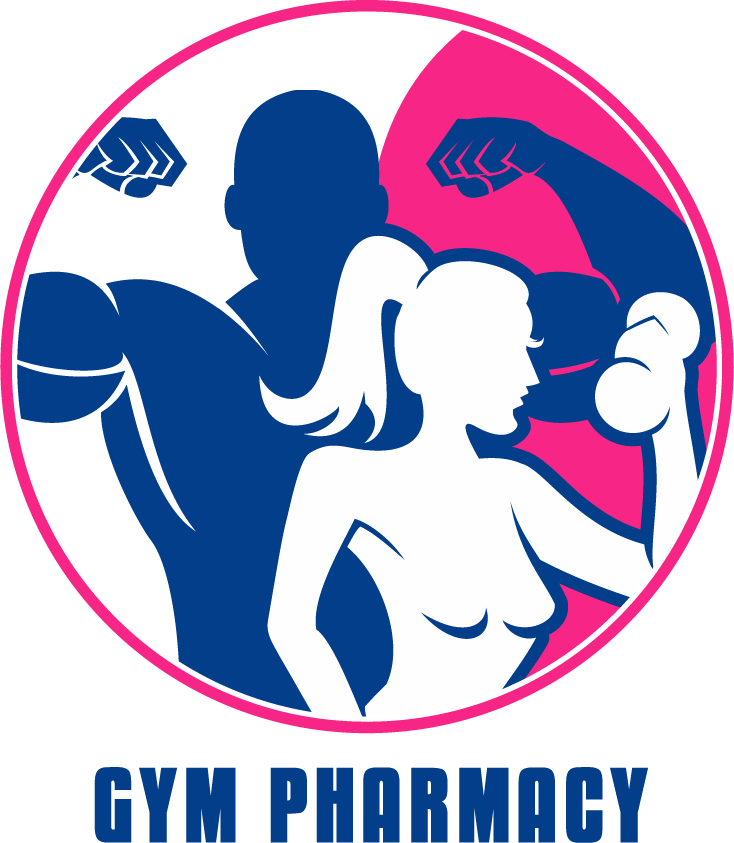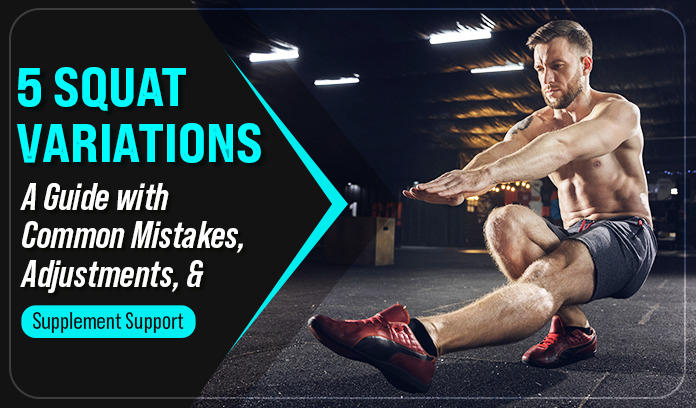Squats are a rewarding compound exercise.
They target multiple muscle groups in the lower body. From sumo wrestlers to cyclists, they hit the right fitness metrics even for advanced users and beginners alike.
That’s why it’s essential to get the best out of them.
How to do Proper Squats
In this blog post, we will explore various squat variations to help you maximize your gains in the lower body. There will be step-by-step instructions, common mistakes to avoid, adjustments for proper form, and the role of muscle-building supplements in enhancing your muscle. It is also one of the best exercises for legs.
Get ready to strengthen your lower body and take your squats to the next level!
Back Squat: The King of Lower Body Strength
Perfecting the Back Squat Technique
- Begin with the barbell resting on your upper back (trapezius muscles).
- Step back from the rack and position your feet shoulder-width apart or slightly wider.
- Lower your body by bending at the hips and knees while keeping your chest up and core engaged.
- Descend until your thighs are parallel to the ground or slightly below.
- Drive through your heels to return to the starting position.
Common Mistake: Letting the knees cave inward. Ensure your knees track in line with your toes to maintain proper alignment and prevent stress on the knee joints.
Front Squat: Quad Exercises
Mastering the Front Squat Form
- Position the barbell across the front of your shoulders, resting on your collarbone and fingertips.
- Cross your arms and create a “shelf” with your deltoids to support the barbell.
- Keep your elbows up, chest lifted, and core tight.
- Descend by pushing your hips back and lowering your body until your thighs are parallel to the ground or slightly below.
- Push through your midfoot and extend your knees and hips to return to the starting position.
Common Mistake: Allowing the elbows to drop and the chest to collapse. Maintain an upright posture to engage the quadriceps and prevent excessive strain on the wrists.
Goblet Squat: Perfect for Beginners and Core Activation
Executing the Goblet Squat Properly
- Hold a dumbbell or kettlebell with both hands at chest level.
- Stand with your feet shoulder-width apart or slightly wider.
- Keep your chest up, core engaged, and elbows pointing down.
- Lower your body by bending at the hips and knees, maintaining an upright torso.
- Descend until your elbows touch the insides of your knees or your thighs are parallel to the ground.
- Push through your heels to return to the starting position.
Common Mistake: Allowing the knees to collapse inward. Focus on pushing the knees out to maintain proper alignment and activate the gluteal muscles.
Bulgarian Split Squat: Unilateral Strength and Stability
Achieving Balance with Bulgarian Split Squats
- Stand with one foot positioned on a raised surface, such as a bench or step, with the other foot positioned forward.
- Keep your chest up, core engaged, and shoulders back.
- Lower your body by bending your front knee and lowering your back knee towards the ground.
- Descend until your front thigh is parallel to the ground or slightly below.
- Push through your front heel to return to the starting position.
Common Mistake: Leaning too far forward. Maintain an upright torso and focus on engaging the front leg to target the quads and glutes effectively.
Sissy Squat: Building Quads and Developing Knee Stability
Performing the Sissy Squat with Proper Technique
- Stand with your feet hip-width apart and your hands resting on a support, such as a bar or a wall.
- Shift your weight onto your toes, lifting your heels off the ground.
- Slowly lower your body by bending at the knees, allowing your torso to lean back.
- Continue descending until your thighs are parallel to the ground or slightly below.
- Push through the balls of your feet and extend your knees to return to the starting position.
Common Mistake: Allowing the knees to travel too far forward, which can lead to excessive stress on the knees. Keep your knees in line with your toes and maintain control throughout the movement.
Supplement Support for Squat Workouts:
- Protein Powder: Supports muscle repair and growth, aiding in recovery after intense squat workouts.
- Branched-Chain Amino Acids (BCAAs): Promotes muscle protein synthesis, reduces muscle soreness, and enhances recovery.
- Creatine: Boosts strength and power, leading to improved squat performance and muscle adaptation.
We trust you know what your limits are. And if you don’t, your trainer can help you find them, and push them. So try each and every variation to know what your ideal exercise is!

